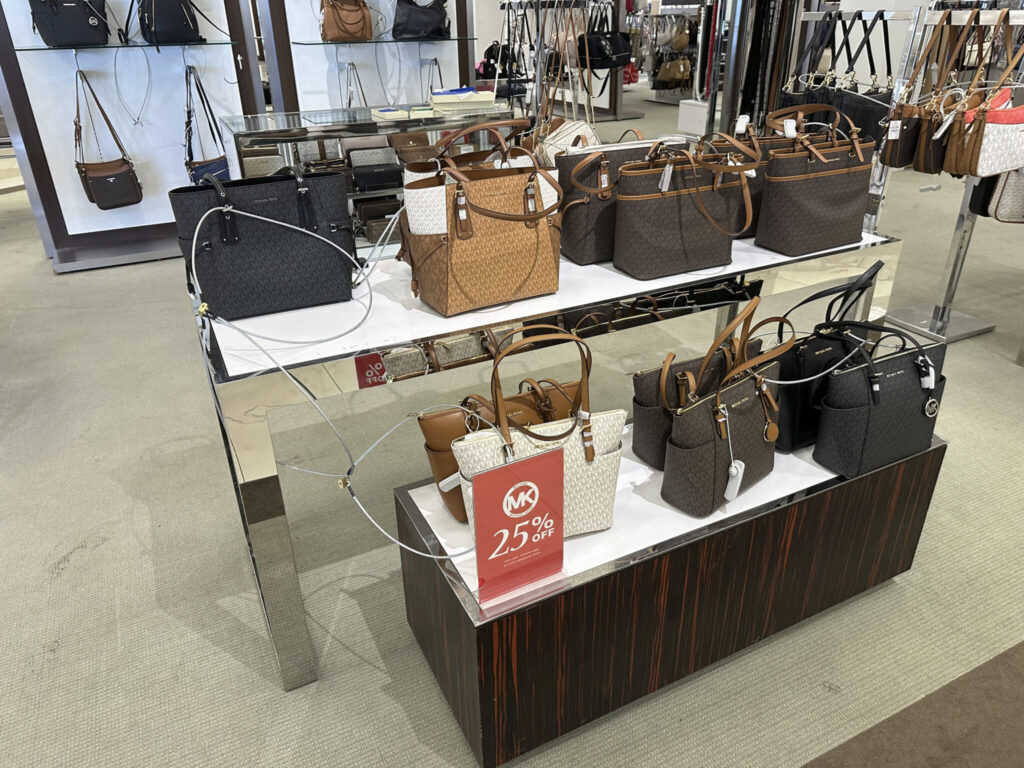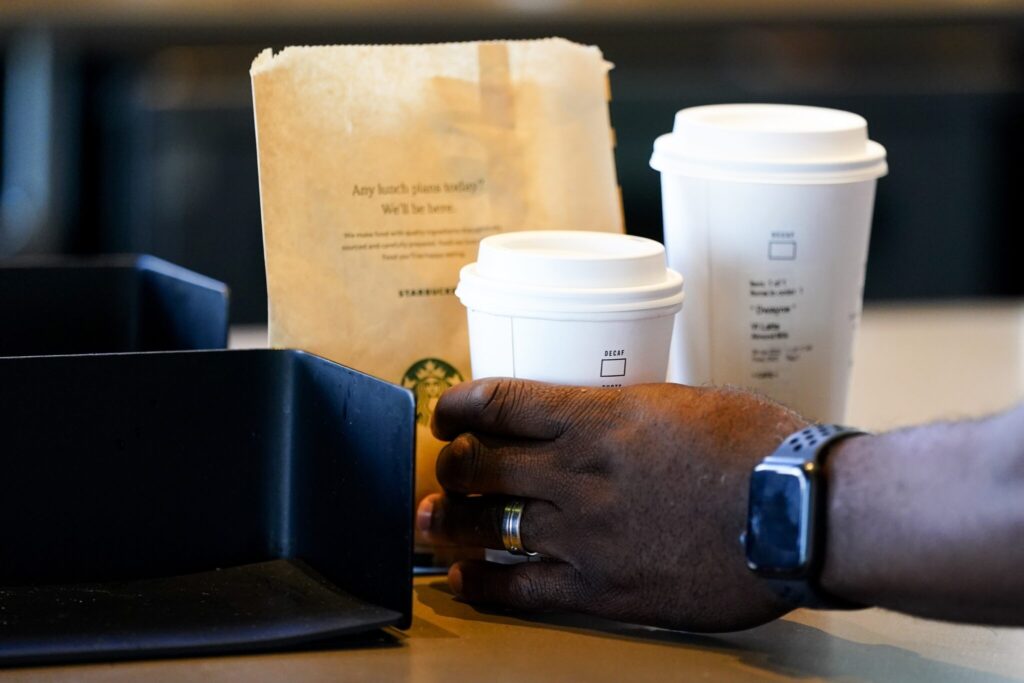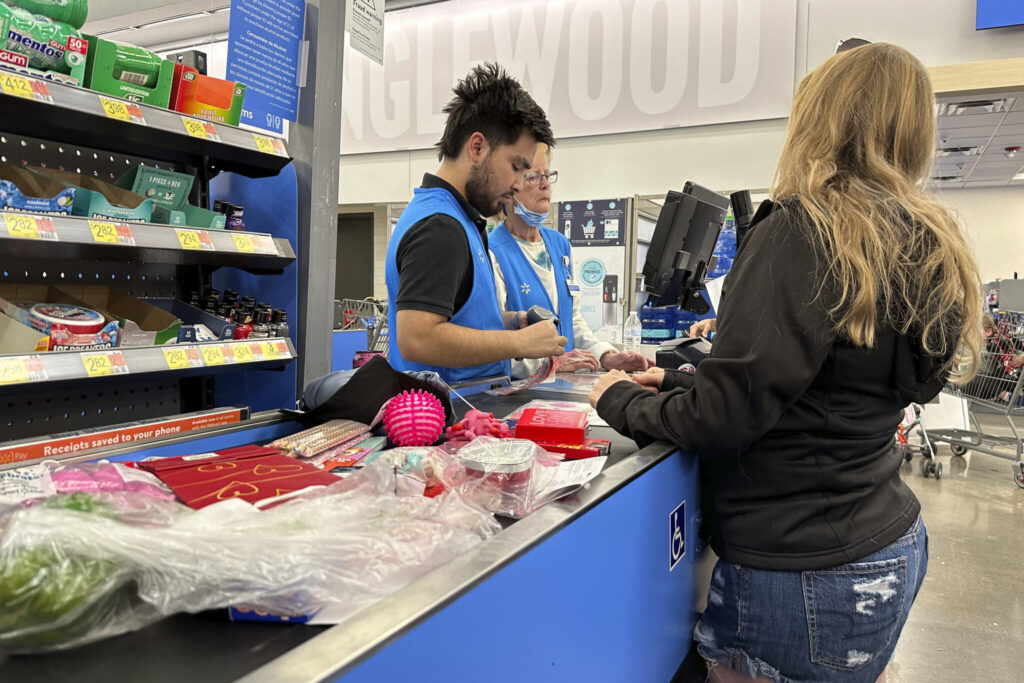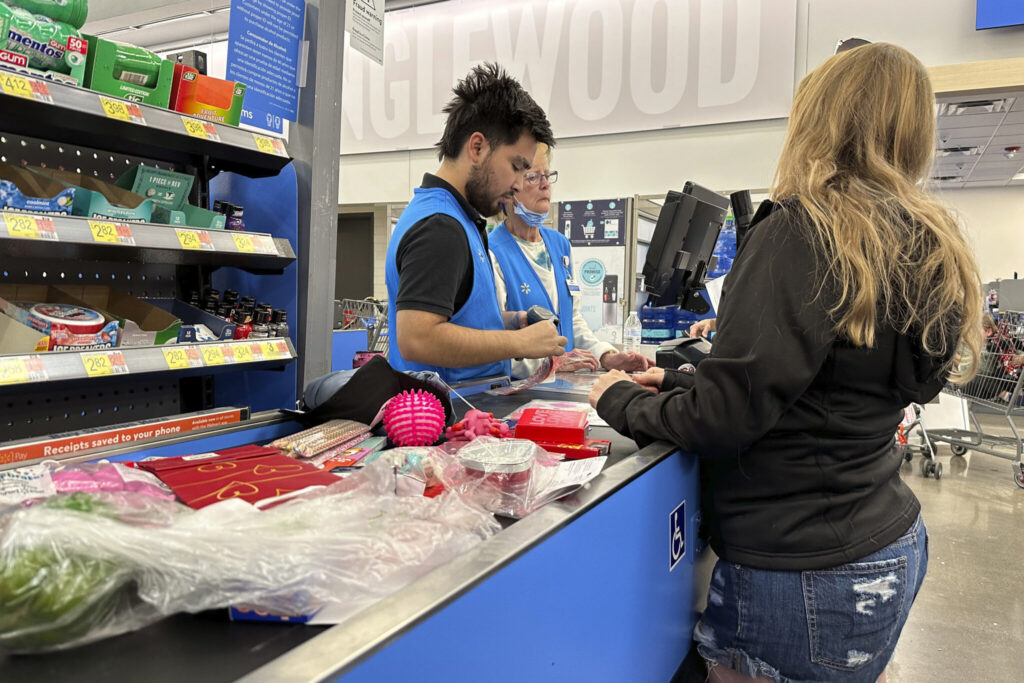Americans unexpectedly paused their spending in April from March as inflation continued to sting and elevated interest rates made taking on debt more burdensome. Retail sales were unchanged, coming in well below economists’ expectations, and follow a revised 0.6% pace in March, according to Commerce Department data released Wednesday. Sales rose 0.9% in February. That comes after sales fell 1.1% in January, dragged down in part by inclement weather. Excluding gas prices and auto sales, retail sales fell 0.1%
Quick Read
- Retail Sales Stagnation: Retail sales in the U.S. remained unchanged in April compared to March, falling below expectations after a revised increase of 0.6% in March and a rise of 0.9% in February.
- Factors Influencing Sales: High inflation and elevated interest rates are dampening consumer spending. Specific declines were noted in online sales, which dropped 1.2%, possibly influenced by a new Amazon sales event and the early Easter timing.
- Sector Performance: Notable changes in specific retail sectors include a 1.5% increase in electronics store sales, a 0.5% decrease in home furnishings, and a 1.6% increase in clothing and accessories stores.
- Inflation and Federal Reserve Response: Concurrently released consumer inflation data showed a slight cooling, providing some relief to Federal Reserve officials. Expectations are that the Fed might start easing rates by September due to improving inflation trends.
- Employment and Consumer Sentiment: Although job additions in April were solid at 175,000, they were lower than March’s 315,000, indicating a cooling labor market. Consumer sentiment fell to a six-month low, primarily due to concerns over inflation and interest rates.
- Spending Shifts: Consumers are increasingly seeking bargains, with a significant shift towards cheaper online apparel and a decrease in spending on higher-end products.
- Impact on Major Retailers: Retail giants like Home Depot and Starbucks are experiencing declines in sales, prompting strategies like increased promotions to boost customer spending. McDonald’s is also adjusting by offering more deals to attract customers.
The Associated Press has the story:
Retail sales were unchanged in April from March as inflation & interest rates curb spending
Newslooks- NEW YORK (AP) —
Americans unexpectedly paused their spending in April from March as inflation continued to sting and elevated interest rates made taking on debt more burdensome.
Retail sales were unchanged, coming in well below economists’ expectations, and follow a revised 0.6% pace in March, according to Commerce Department data released Wednesday. Sales rose 0.9% in February. That comes after sales fell 1.1% in January, dragged down in part by inclement weather.
Excluding gas prices and auto sales, retail sales fell 0.1%
Retail sales were also dragged down by a 1.2% drop in online business, reflecting a new sales event at Amazon and the earlier timing of Easter this year, according to Michael Pearce, deputy chief U.S. economist at Capital Economics. Business at electronics stores was up 1.5%. Sales at home furnishings stores slipped 0.5%. Sales at clothing and accessories stores posted a 1.6% gain.

The retail sales figure came out on the same day that the government issued its report on consumer inflation, which showed it cooled slightly last month after three elevated readings, likely offering a tentative sigh of relief for officials at the Federal Reserve as well as President Joe Biden’s re-election team.
“Consumer spending is slowing as elevated interest rates weigh on rate-sensitive spending and as the labor market cools,” Pearce wrote in a report published Wednesday. But he said he’s not concerned.
“The resilience of the economy frees the Fed to focus on the incoming inflation data to guide its rate decisions, which we think will improve over the coming months and prompt the Fed to begin gradually easing rates beginning in September,” he continued.
The retail sales data offers only a partial look at consumer spending because it excludes things like travel and lodging. However at restaurants, the lone service category tracked in the monthly retail sales report, sales rose 0.2% from March.

There have been some hints that the Federal Reserve’s campaign to cool inflation by reining in spending may be taking hold. Employers pulled back on hiring in April adding 175,000 jobs, still a solid number, but down sharply from the surprisingly strong 315,000 hires in March.
Still, inflation remains an issue.
Prices rose 0.3% from March to April, the Labor Department said Wednesday, down slightly from 0.4% the previous month. Measured year-over-year, inflation ticked down from 3.5% to 3.4%. And a measure of underlying inflation, which excludes volatile food and energy costs, also eased in April.
Inflation had been unexpectedly high in the first three months of this year after having steadily dropped in the second half of 2023. Stubbornly high apartment rents are a key reason behind persistent inflation.
The elevated readings had dimmed hopes that the worst bout of inflation in four decades was being rapidly tamed. That has weighed on consumer confidence.
U.S. consumer sentiment fell in May to the lowest level in six months with the leading cause cited by Americans being inflation and interest rates, as well as rising anxiety about unemployment despite the very health job market.

Just how Americans are spending offers some clues about their mindset in this environment of plentiful jobs and higher costs. Spending online rose 7% for the first four months of the year, according to Adobe Analytics, but a lot of that money is going towards cheaper personal care goods, electronics, clothing, furniture and groceries.
People continue to spend, but increasingly they’re looking for bargains.
The share of sales for the cheapest apparel online jumped from 36% in April 2019 to 53% in the same month this year, according to Adobe, while the market share of the most expensive apparel was more than halved, making up just 9% in the same time frame.
That trend is playing out in the most recent quarterly financial reports from retailers.
Home Depot, the nation’s largest home improvement retailer, said Tuesday that sales declined for the third consecutive quarter to start 2024 as homeowners and prospective buyers wrestled with higher mortgage rates and inflation.
Starbucks last month lowered its sales expectations for the year as visits to its coffee shops slow worldwide. The decline in spending at U.S. stores was even worse than it had anticipated.
To combat slowing sales, McDonald’s said late last month that it will begin rolling out more deals for customers after the burger giant realized people people were eating out less often in many of its biggest markets.







